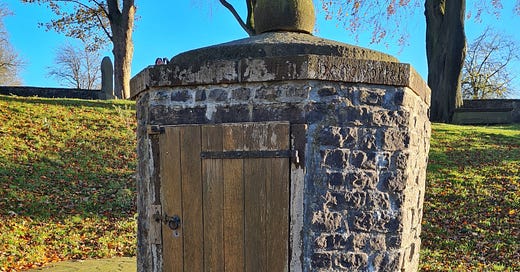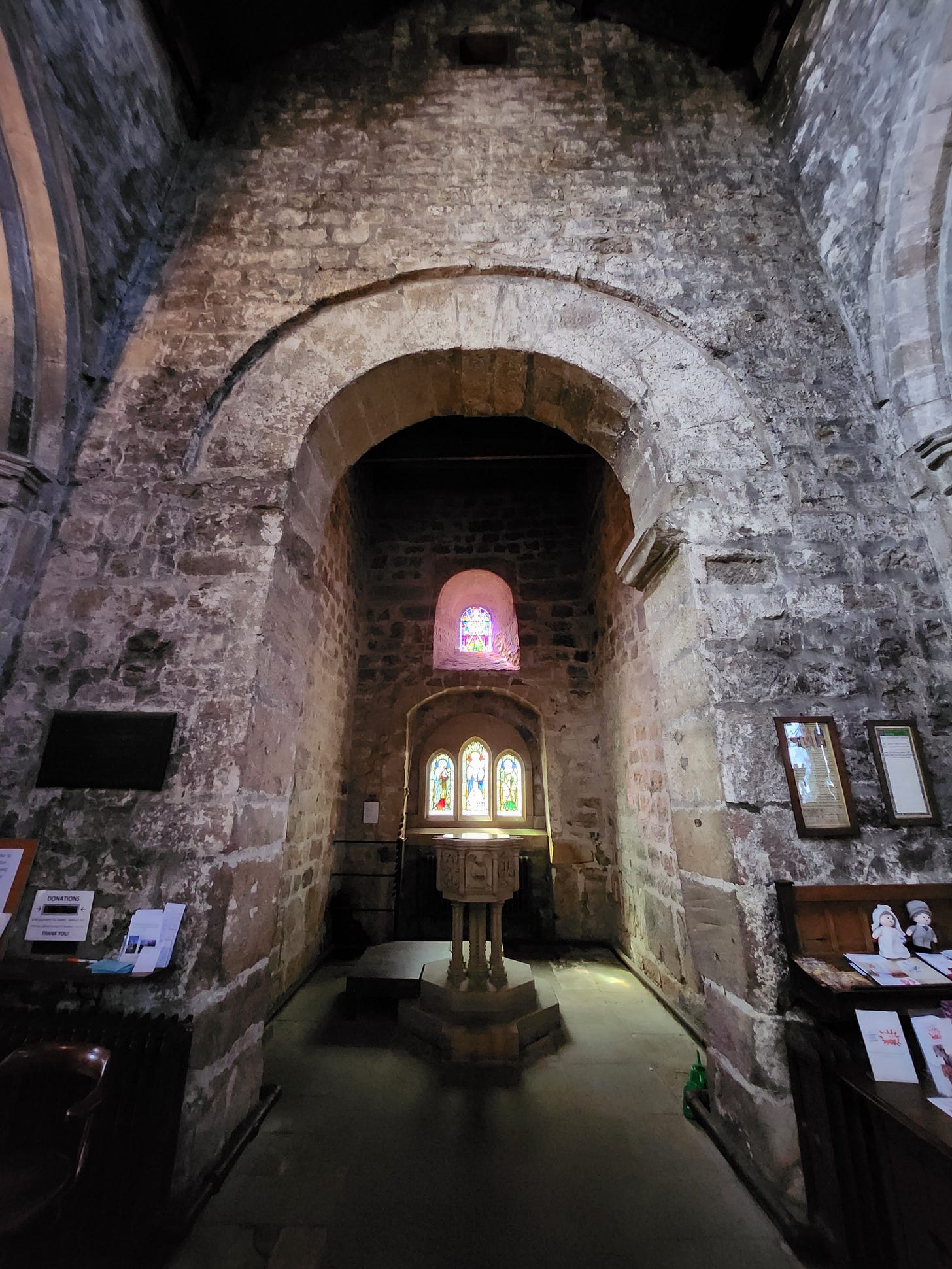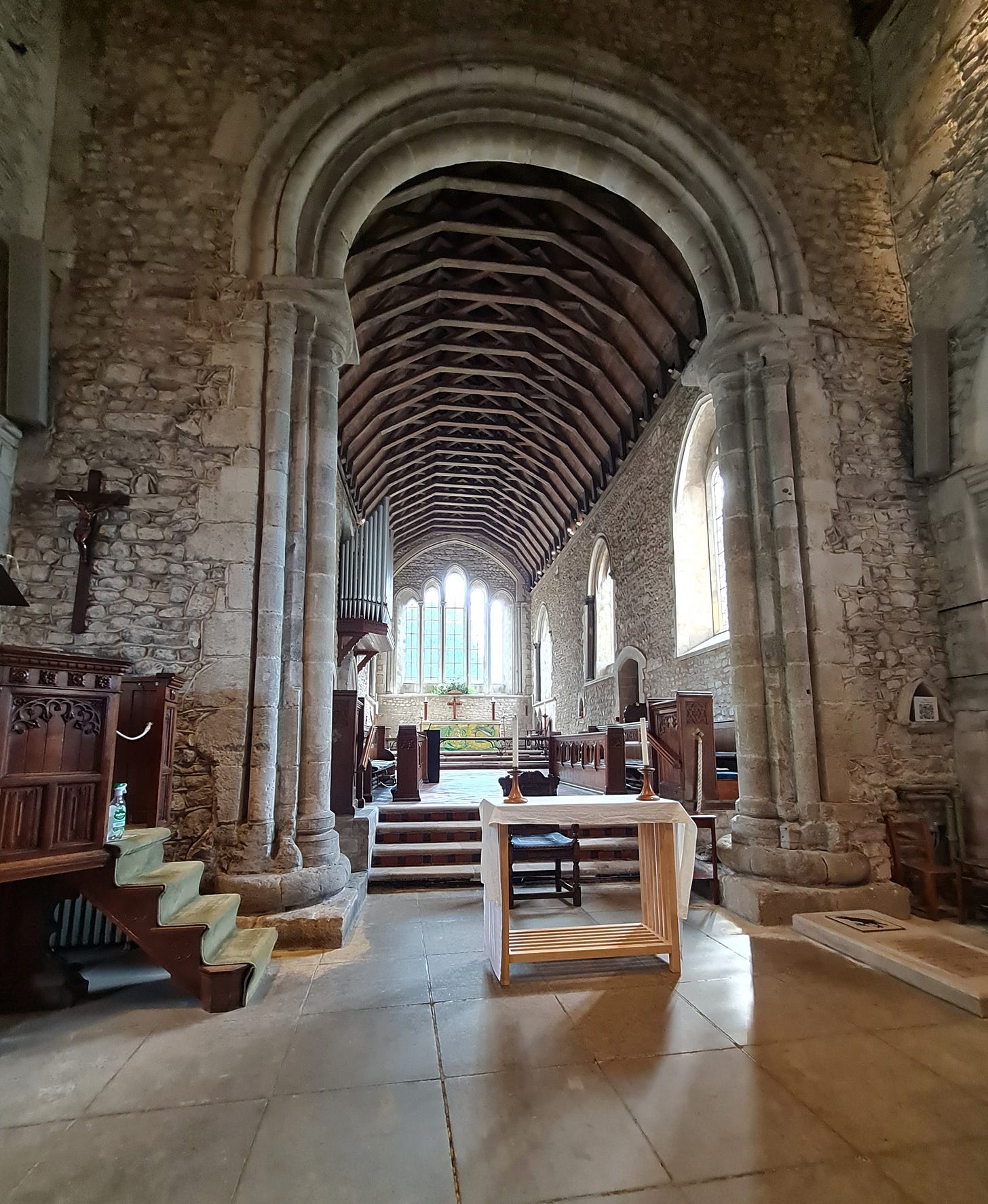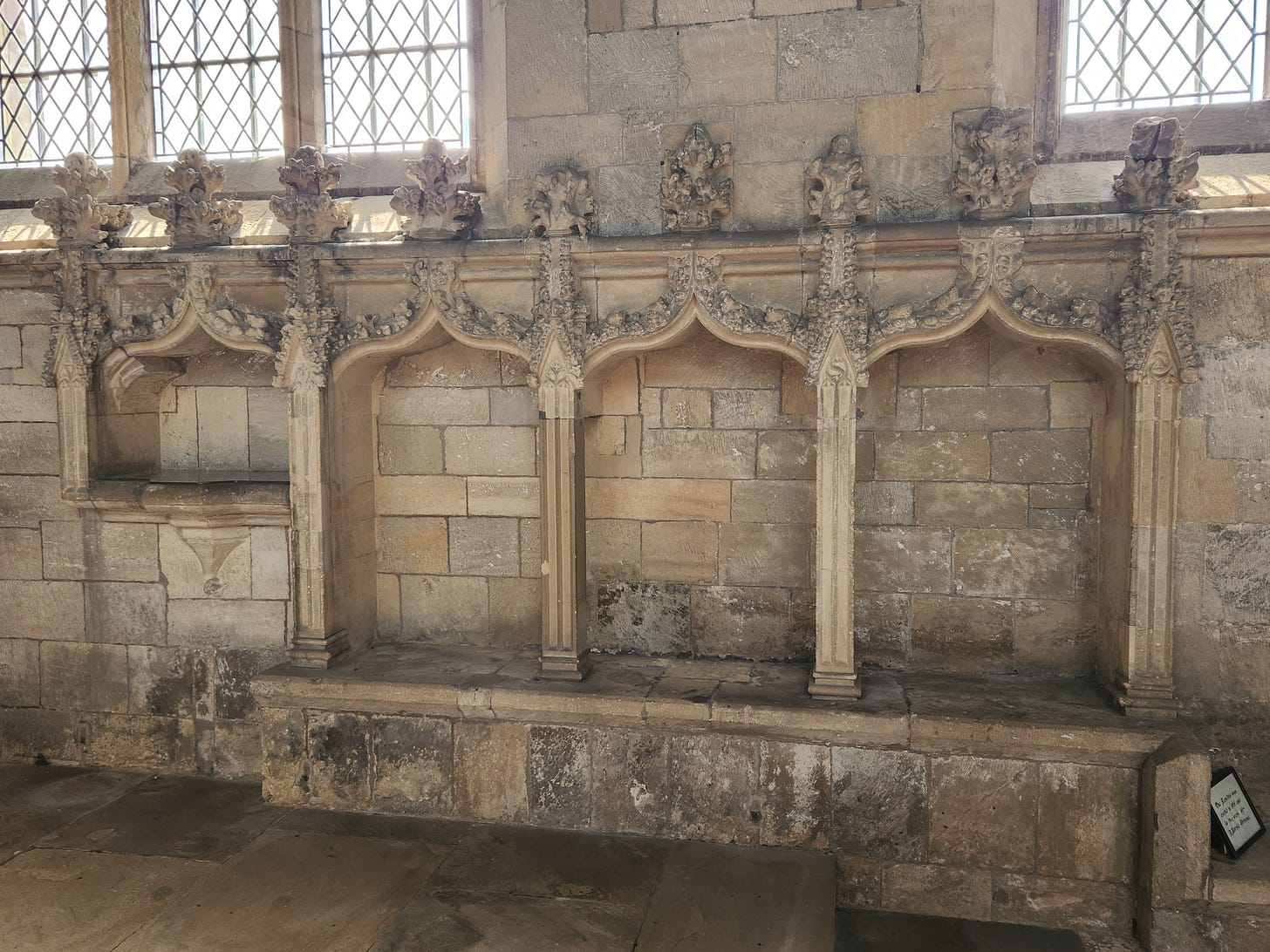[Holy well at Thornton-in-Craven]
What is Church Crawling? The phrase comes, I suppose, from “Pub Crawling”, which is the venerable tradition of moving from drinking hole to drinking hole in a town, drinking alcohol in each one over the course of an evening. Pub crawling is more difficult these days due to the decline in the number of pubs, but the phrase has given rise to that of Church Crawling.
I should say straight off that there is no alcohol involved, largely because churches are not that close together and you usually have to drive between them. But you can cover a few in a day; my personal record is seven.
The purpose of church crawling is largely to experience an ancient English church and explore its history, architecture and art. I’m not normally interested in anything built after the Reformation, though if there is a notable church of that kind built on or near an ancient one I might have a look. My interest lies in Anglican churches which were Catholic back before the late 16th century.
I got into this by accident. Near where I live there is an ancient, though minor, pilgrim route to Whalley Abbey, a former Cistercian foundation in Lancashire (north-west England). I’ve walked it many times; so when I saw a book on Pilgrim routes I was naturally interested and bought it. Sadly, my own route was not covered but it did have a number of different routes and, more importantly, the destinations of those routes – the churches and things they went to see. Holy wells are a particular favourite of mine and most of them are near ancient churches.
[Holy well at Thornton-in-Craven]
From this “gateway drug” it was then a slippery slope towards church crawling as a destination rather than a by-product. A holiday in Cumbria early in 2022, which covered Roman history, Hadrian’s wall and holy wells, then resulted in visiting a church in a field, which happened to be next to a former Roman fort. This church is what is called “redundant”, i.e not used for worship any more but preserved by one of the charitable trusts which care for such places. The most well-known are the Churches Conservation Trust and Friends of Friendless Churches. I joined the Churches Conservation Trust and they had a series of video talks about church crawling and architectural history. I was hooked.
Why do I like visiting churches so much? I think it’s combination of the physical and spiritual history of a place.
Many of our churches have connections to the Roman period; quite a number are built within or just outside former Roman fort sites. At Vindolanda they found the curved apse of a 5th century church – a rare thing. Many churches were built out of Roman stone, often quarried from Hadrian’s wall. At Corbridge and Escomb, they have arches which are built out of Roman arches transported from the nearby Roman forts.
[Corbridge]
Anglo-Saxon and Viking crosses and carvings sometimes survive, giving us a view of a world with different art and mythology to our own.
Some churches played a role in history; Bosham was the seat of King Harold who was killed by William the Conqueror in 1066. Its iconic arch features in the Bayeux Tapestry and arguments still rage on whether this arch is very late Anglo-Saxon or very Early Norman.
[Bosham]
The average Anglican parish church with ancient origins is a mish-mash of bits and pieces from all periods, a jigsaw puzzle of sorts, which I enjoy working out.
The Reformation of the 16th century led to a wholesale despoiling of churches which went on for a considerable period of time. Gradually, churches became whitewashed, bare places with no religious art and only scriptural texts painted on the walls. But some of the parishioners couldn’t bear to smash up their treasured items of devotion and took steps to hide them. In the nineteenth century, many things came to lights as the Victorians renovated (or sometimes wreckovated) churches; medieval altars buried under floors, stone crucifixes buried in the churchyards, precious items walled up inside stairs to vanished rood lofts, plastered over Sedilia emerging into daylight once again.
[Patrington sedilia, once stuffed with straw bales and plastered over]
Stained glass was destroyed in massive quantities in the medieval and later civil war period, with only some of the major churches escaping the damage. Very many small parish churches now display tiny fragments of medieval glass at the top of windows. What survives, though, is magnificent. The 14th century windows at Canterbury which record the miracles of St Thomas Becket, the Jesse window of Selby, the great Apocalypse window at York; these are all treasures of our artistic heritage which, if the Taliban-like reformers had their way, we would no longer see.
[Canterbury window]
Church crawling is a way to respect and preserve these survivals of our past as a country, from a time when everyone went to church at least once per year, where their children learned their faith from the paintings on the walls, where the guilds and lay associations which provided support to their members were centred.
It’s important to support these places. Most rural churches do not have electronic payment systems but a simple box with a coin slot in the wall. A few pounds at each church is required and that takes a lot of cash over the course of a week!
Spiritually I find these places both encouraging and depressing – some are so bare and devoid of religious or human presence. Much of the medieval art that survives, however, is profoundly inspiring and I meditate on the images before and after my visit. Some of the art is unique – the lily crucifix at Godshill, Isle of Wight, for example.
[Godshill crucifix]
I say a prayer in each church I visit, remembering all the souls who worshipped in these places so many centuries ago. Keeping their memory and their churches alive keeps our cultural history alive.
Catholic Pilgrim also writes on her own SubStack newsletter. Come and subscribe to her there.
If you enjoyed this article, please consider subscribing to receive more articles like this one.
If you have a comment, please click this link to the comments form. It might appear in the Letter’s Page, which will be published next week.
Finally, we would encourage you to share this with your friends and family. They might like these stories too.










